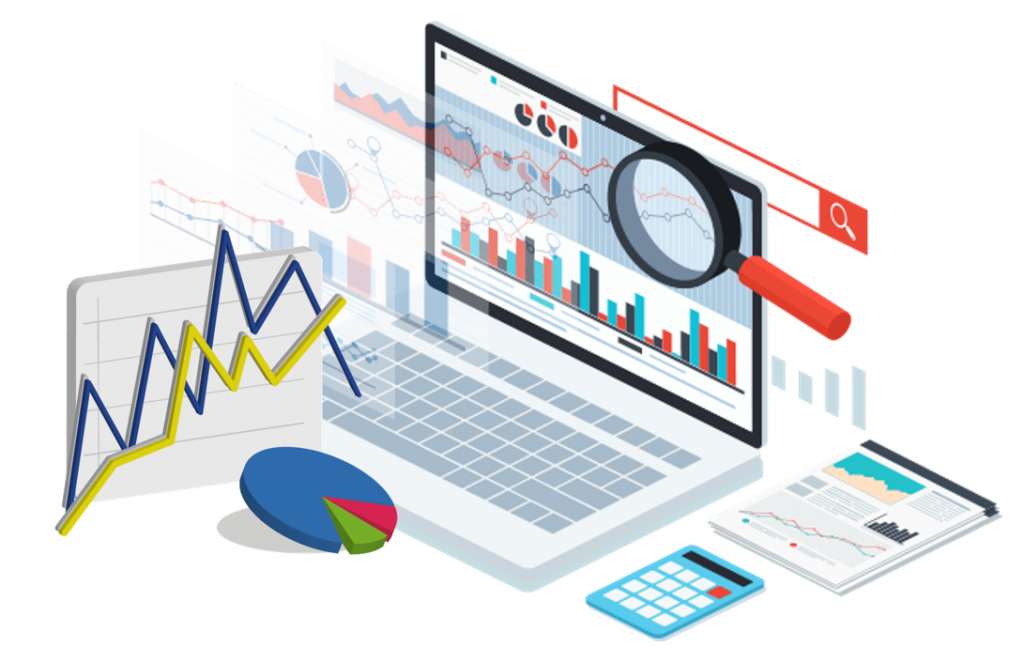Combining technical and fundamental analysis isn’t just smart; it’s a game-changer in investing. You’ve heard the buzz about technical analysis with its charts and patterns. And you’re well aware of fundamental analysis, digging deep into a company’s financial health. But watch what happens when you fuse them together. This isn’t about picking one over the other; it’s about harnessing the power of both to make investment choices with confidence. Read on to crack the code of using these twin strategies to pick stocks that can stand the test of market ups and downs, align with your financial goals, and potentially put you on the path to smart investing mastery.
The Synergy of Technical and Fundamental Analysis in Smart Investing
Understanding the Interplay of Charting Patterns and Economic Indicators
Investing smart means putting together pictures and numbers. It’s like seeing patterns. Like when leaves grow in spring, it’s part of a pattern. In investing, we watch patterns in charts. We also look at what’s happening in the business world – those are our numbers.
To make it simple, think of chart patterns as a game of connect-the-dots. Each dot is a price point. We draw lines to see shapes. These shapes help us predict where the price might head next. The numbers part involves looking at how much money a company makes, its debts, and how it grows.
Now, imagine blending these two. When charts and numbers agree, it’s a strong sign. It shows us the best time to put our money in or pull it out. We use this duo to make our investing super smart. It’s a bit like having both a map and a compass when exploring.
Key Principles Behind Combining Analysis Methods for Investment Decision-Making
When we pick stocks, we mix two worlds. We blend the science of chart watching with the study of company health. This gives us a full picture. Think about baking a cake with the best ingredients from two recipes. That’s what we’re doing with investing!
Here’s how it works:
First, we look at the charts. What are they telling us? Is the stock moving up or down? What patterns do we see? This is called technical analysis.
Next, we dig into the company’s performance. Is it healthy? Making money? This is fundamental analysis.
We don’t stop there. We dive into the news, too. What’s the world saying about this company? We also peek at the company’s balance sheet. It tells us if they have enough cash.
We put all this together to decide if a stock is a winner. We want our money in stocks that grow. We also want to be careful. We don’t want to lose what we have. So, this mixing of chart art and number crunching helps keep our funds safe.
By doing both, we get to make choices that feel good for today and tomorrow. This combo helps us buy stocks when they’re low and sell when they’re high.
When we juggle the charts and numbers, we can sidestep some risks. We’re like detectives, using clues to solve a mystery. Only our mystery is finding those great stocks!
In the end, investing is both an art and a science. The best investors use both to make money. And that’s what makes the investing world both a challenge and a thrill. It’s what keeps us coming back for more, always learning and getting better.
Crafting a Dual-Pronged Investment Strategy
Optimizing Asset Allocation with Mixed Analysis Techniques
To beat the market, smart investors use both charts and company data. This mix helps find the best stocks to buy. Charts show us trends and patterns. They let us see which way prices might go. But alone, they don’t tell the whole story. We also dig into a company’s health. We look at how much money it makes and what it owns. This helps us choose stocks with care. By doing both, we make better choices. We spread out what we own to lower risk.
Why mix these methods? Because the market is complex. We use tools like price action and earnings reports. This mix gives us a complete picture. We see strong companies in growing markets. We also avoid those that may not do well. We pick stocks that fit well together. This way, we can guide our money to where it might grow best.
The Role of Market Sentiment and Financial Health in Asset Selection
Feelings drive markets too. How investors feel can change stock prices. Watching these emotions can clue us in. It’s like a sneak peek into what might happen next. It can tell us if a stock will be hot or not.
But we keep our heads cool. We balance this with hard facts about a company’s money health. We check its balance sheet. Is it making enough money? Does it have too much debt? By balancing emotion with facts, we pick stocks with our heads, not just our hearts. We aim for stocks that seem strong for the long haul.
Combining the two in investing is smart but needs skill. It’s like a puzzle. But when done right, it can help us win at investing.
Making good investment choices is like baking a cake with the best ingredients. Just like a chef picks quality flour and fresh eggs, we pick top stocks using both their price charts and their financial health. This is how we aim to win in the game of investing.
Advanced Techniques for Stock Evaluation and Timing
Merging Behavioral Finance Insights with Technical Analysis Patterns
Investors like us need smart ways to pick stocks. Think of the stock market as a big, noisy room. Prices move up and down. New info pours in non-stop. It’s easy to get lost! But here’s a cool trick to make better choices: Mix what charts tell us with how people behave.
Charts show patterns. They help us spot trends. For instance, we use lines like Bollinger Bands. These lines can hint if a stock’s price might drop or jump. It’s like watching race cars. If they edge too close to the track’s sides, they might flip or zoom ahead!
People’s behavior matters, too. How? Fear and greed drive markets. If folks get scared, they sell stocks. Prices fall. If they get greedy and buy, prices rise. We watch this drama unfold on charts and in news.
Merging these insights is smart because it’s complete. We look at numbers and at human nature. Some call it using both sides of your brain.
Using both, we make fewer mistakes and can guess better what a stock will do. This helps us choose the right time to buy or sell. We get a clearer picture and avoid snap choices.
Using Price Action and Earnings Analysis to Forecast Stock Movements
Let’s get into specifics. How do price moves and profit reports help us?
First, price action is how a stock’s price changes over time. It’s live storytelling. It can reveal a lot. Is the stock calm or wild? Is it slowly climbing or falling? This is our clue.
Second, earnings reports. They show if a company makes money or loses it. And not just that, we see how much and why. It’s like a health check for a business. Healthy businesses often see their stock prices go up. Sick ones may drop.
Now, mix them. We look at prices dancing on charts and dig into company reports. This combo helps us predict better. It’s like being a detective. We don’t just look at what happened; we ask why and how it’ll change things.
By doing this, we get ahead in the game. We can judge if a stock is a good buy. Or if it’s time to walk away. With both tools — price action and earnings — we make decisions not just on gut feel, but backed by facts.
In short, we’re like chefs. We blend different spices — price charts, earnings, human nature. What comes out? A tasty dish! Or, in our case, a strong chance to make money in stocks. We don’t just throw darts at a board. We play it smart, mixing all the right ingredients.
Building Resilience Through Comprehensive Market Analysis
Managing Investment Risks by Balancing Quantitative and Qualitative Insights
When we mix quantitative and qualitative research, we get a strong shield for our money. Think about it like making a smoothie with the best fruits and veggies. Just as a balanced diet can keep your body healthy, a balanced investment approach can keep your finances sturdy against market ups and downs. It’s simple: mix numbers with stories. We look at charts and trends, sure. But we also look at what’s happening in the world.
Here’s the scoop. Sure numbers tell a tale, but the world’s events fill in the blanks. For instance, we pay attention to the balance sheets and income statements. This tells us if a company is making or losing money. You want to buy stocks from firms with more money coming in than going out, right? So, we use that number magic, but we don’t stop there.
Next, let’s chat about market sentiment versus financial health. It’s like a mood check for the market. Is everyone happy and buying, or worried and selling? We compare this mood with how solid a company’s cash flow looks. A great company might seem less shiny if everyone’s selling their stocks. By weighing both these sides, we make smart choices on where to put our money.
The Integration of Technical Analysis Tools and Fundamental Valuation Metrics
Now, let’s dive into the cool tools we use for all this. First up, technical analysis tools like stochastic oscillators and candlestick patterns. These help us spot trends in stock prices – kinda like how meteorologists use radars for weather patterns. Then, we’ve got our fundamental ratios, like price-to-earnings (P/E) and debt-to-equity, which are like a health check-up for companies.
We notice how the stock prices dance, and why. Are they soaring because a company did something great? Or dropping because of bad news? We look at all that to see what’s hot and what’s not. And yup, we even check how company big shots feel – that’s the investor psychology bit.
Think you’ve seen patterns in how stocks move? You’re right, and that’s where candlestick patterns and economic health or Bollinger Bands and business cycles hop in. Sometimes stocks go up and down in ways that match up with how people are spending or how companies grow. When we line that up with how much cash a company has, we have an even clearer picture.
To sum it up, we’re like detectives. Merging all these clues – the price volume data and financial benchmarks with what’s buzzing in the world. It’s more than just a guessing game; it’s about using every piece of the puzzle. For you, that means choices that can weather storms and shine in the sun, all because we looked at both the numbers and the stories behind them. By joining the dots between both worlds, we give every penny a fighting chance to grow.
In this post, we dove into how smart investing means blending technical and fundamental analysis. We explored how charts and economic cues work together, and the main ideas behind using both to make smart choices.
We discussed crafting a strategy that uses both analysis types to figure out where to put your money. Market feelings and company health play big roles in picking assets.
Then, we looked at advanced ways to check stocks and decide when to act. We saw how understanding people’s money behaviors helps read the charts better. Also, we talked about using prices and earnings to guess where stocks will go.
Lastly, we learned that to stay strong in investing, you need to look at all the facts and numbers. This means using both tech tools and deep company know-how in your choices.
So, keep these tips in mind. They can make your investments smarter, and help you handle the ups and downs of the market.
Q&A :
Can combining technical and fundamental analysis improve trading decisions?
Combining technical and fundamental analysis can provide traders with a more holistic view of the market. While technical analysis focuses on identifying trends and patterns in price movements, fundamental analysis considers economic indicators and company financials. By using both approaches, traders may enhance their decision-making process by understanding not only what is happening in the markets but also why it is happening.
What are the advantages of integrating technical analysis with fundamental analysis?
Integrating technical with fundamental analysis offers several advantages, such as increased confidence in making long-term investment decisions and the potential to spot opportunities that one method alone may overlook. The combination enables traders to validate their findings from one approach with insights from the other, potentially leading to more robust and well-rounded trading strategies.
How does technical analysis complement fundamental analysis in stock trading?
Technical analysis complements fundamental analysis by providing real-time data through charts and technical indicators that can be used to identify the right timing for entry and exit points in the stock market. This is something fundamental analysis, which often provides a broader overview of a company’s valuation or economic conditions, might not address as directly.
What should one consider when merging technical and fundamental analysis?
When merging technical and fundamental analysis, it is important to consider the timeframe of your investment, the volatility of the market, and your risk tolerance. Ensure that the technical indicators and the fundamental metrics you are analyzing are relevant to your investment goals. Additionally, it is crucial to remain adaptable, as market conditions can change rapidly, necessitating a shift in analysis methods.
How to begin combining technical and fundamental analysis for investment purposes?
To begin combining the analyses, start by defining clear investment goals and time horizons. Then, familiarize yourself with the basics of both technical and fundamental analysis. For fundamental analysis, learn to examine a company’s financial statements, economic indicators, and industry trends. In the realm of technical analysis, understand how to read charts and use technical indicators. Practicing on historical data and experimenting with small trades can help refine the combined approach for future investments.






